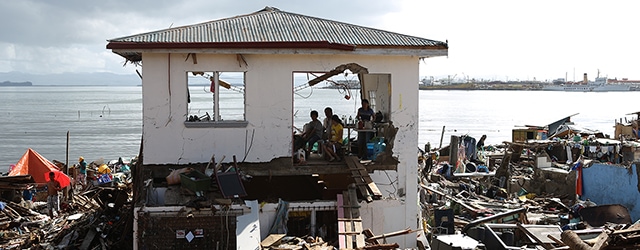The Philippines is getting some financial protection against damage caused by natural disasters.

The World Bank last week issued catastrophe-linked bonds to financially protect the Philippines against losses incurred as the result of natural disasters. This represents a number of firsts: it is the first World Bank bond listed on the Singapore exchange, the first World Bank bond to belisted on an Asian exchange, and the first CAT bond to be sponsored by an Asian sovereign.
Devastating natural disasters are so common for the Philippines that the country ranks last on Global Finance’s list of world’s safest countries. When Typhoon Haiyan hit the Philippines six years ago, 7,300 people were killed and reconstruction costalmost US$6 billion.
While catastrophe or CAT bondsare not a new asset class within the securities market, this is the first time they have been issued in Asia.
The dealcarries a US$75 million three-year tranche paying a three-month Libor less 12bp coupon plus a 5.5% risk margin which covers the risk of earthquakes in the Philippines.
There is also a like-tenor US$150 million tranche to cover damages caused by typhoonsthat pays a Libor less 12bp coupon plus a 5.65% risk margin.
Payouts will be triggered when an earthquake or typhoon meets the criteria stipulated in the bonds’ issuance documentation.
“Many countries in Asia are highly vulnerable to natural disasters, which makes finding innovative, capital markets solutions a major priority to address the impact on their economies,” said Jingdong Hua, World Bank vice president and treasurer.
“The World Bank CAT bonds for the Philippines are the first to be sponsored by the government of an Asian country and the result of a close and long-term partnership between the World Bank and the Philippines government.”
GC Securities and Swiss Re were joint structuring agents, bookrunners and managers. Munich Re was joint structuring agent, placement agent and manager. AIR Worldwide was risk modeller and calculation agent.
Almost 15 years ago, CAT bonds emerged as a way forinsurance and reinsurance companies to transfer weather and disaster-related risks off their books to bondholders.
The CAT bond market grew rapidly between inception in 2004 and up to 2006 due to advances in modelling technology, a heightened awareness of climate change and the increasing incidence of natural disasters, particularly typhoons and flooding.
In 2005 amidst a severe typhoon season, some nine bonds came to market, with 10 pricing the following year. Muchof the issuance came in the form of bespoke, one-off transactions, often generated by reverse inquiry.
The hope with the new World Bank issuance is that similar multi-tranche CAT deals can emerge for general market distribution. Liquidity in the newly minted debt is expected to be high given the attractiveness of owning an asset class that has low correlation to bond and equity markets at a time when both are seen in numerous quarters as displaying classic financial bubble characteristics.
A measure of how far the CAT market has come in pricing terms is that the last issuance flurry 15 years ago saw BB-rated paper price at one month Libor plus as much as 400bp.



